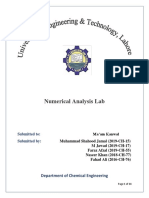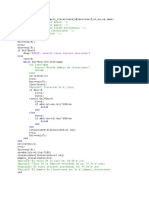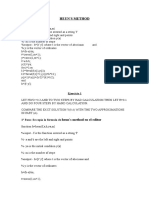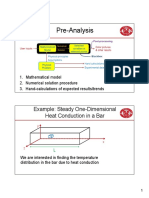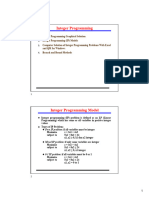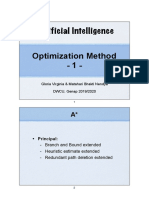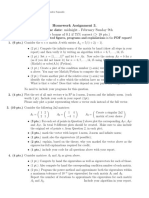0% found this document useful (0 votes)
105 views11 pagesMatlabprogram
The document contains MATLAB code for several numerical methods used to solve differential equations and integral calculus problems including:
1. Newton's forward and backward interpolation methods using divided differences.
2. Numerical integration techniques like the trapezoidal rule, Simpson's 1/3 rule, and Weddle's rule.
3. Ordinary differential equation solving techniques like Runge-Kutta, Euler's method, and modified Euler's method.
4. Root finding algorithms like bisection, Newton-Raphson, and secant methods.
5. A partial differential equation solving technique using Liebmann's method.
Uploaded by
Smit PatelCopyright
© © All Rights Reserved
We take content rights seriously. If you suspect this is your content, claim it here.
Available Formats
Download as DOCX, PDF, TXT or read online on Scribd
0% found this document useful (0 votes)
105 views11 pagesMatlabprogram
The document contains MATLAB code for several numerical methods used to solve differential equations and integral calculus problems including:
1. Newton's forward and backward interpolation methods using divided differences.
2. Numerical integration techniques like the trapezoidal rule, Simpson's 1/3 rule, and Weddle's rule.
3. Ordinary differential equation solving techniques like Runge-Kutta, Euler's method, and modified Euler's method.
4. Root finding algorithms like bisection, Newton-Raphson, and secant methods.
5. A partial differential equation solving technique using Liebmann's method.
Uploaded by
Smit PatelCopyright
© © All Rights Reserved
We take content rights seriously. If you suspect this is your content, claim it here.
Available Formats
Download as DOCX, PDF, TXT or read online on Scribd
/ 11


























